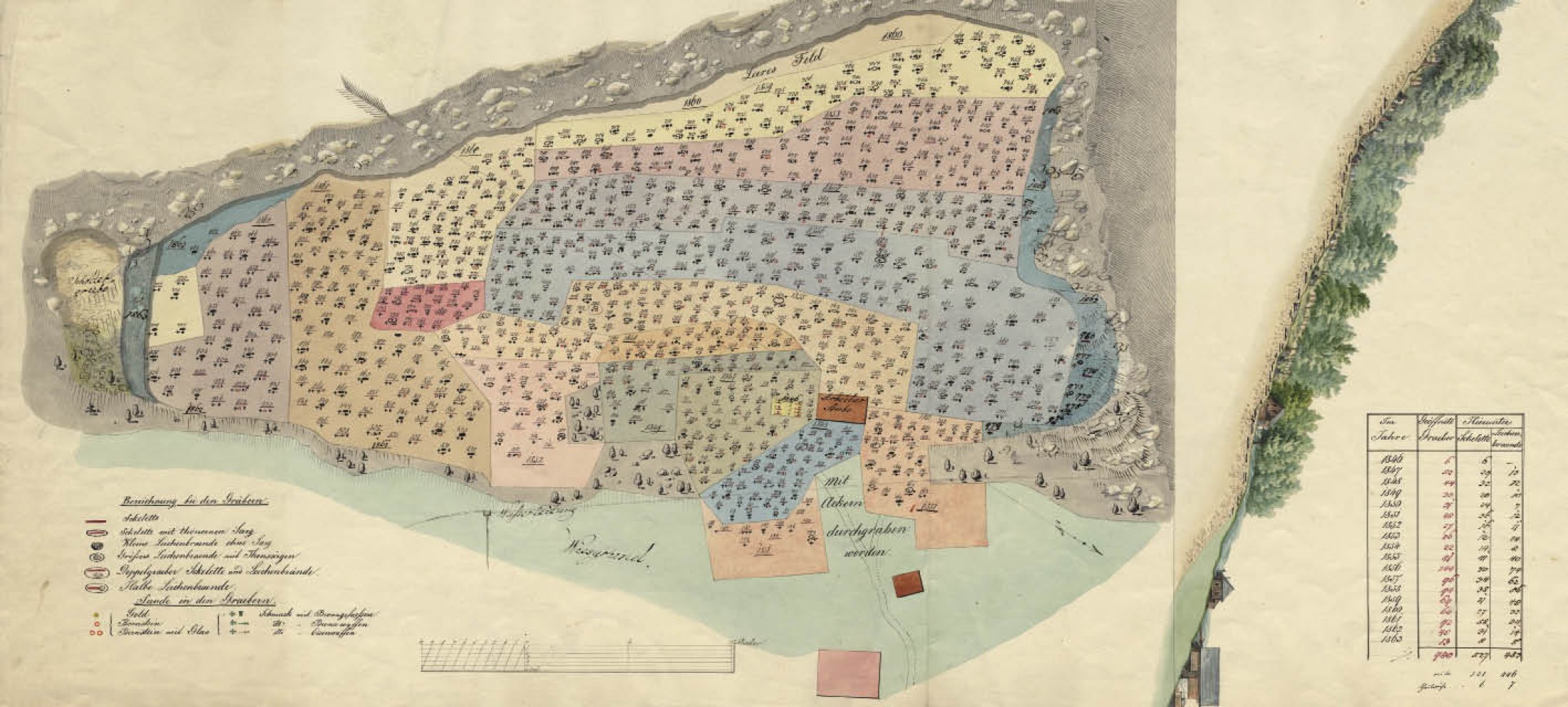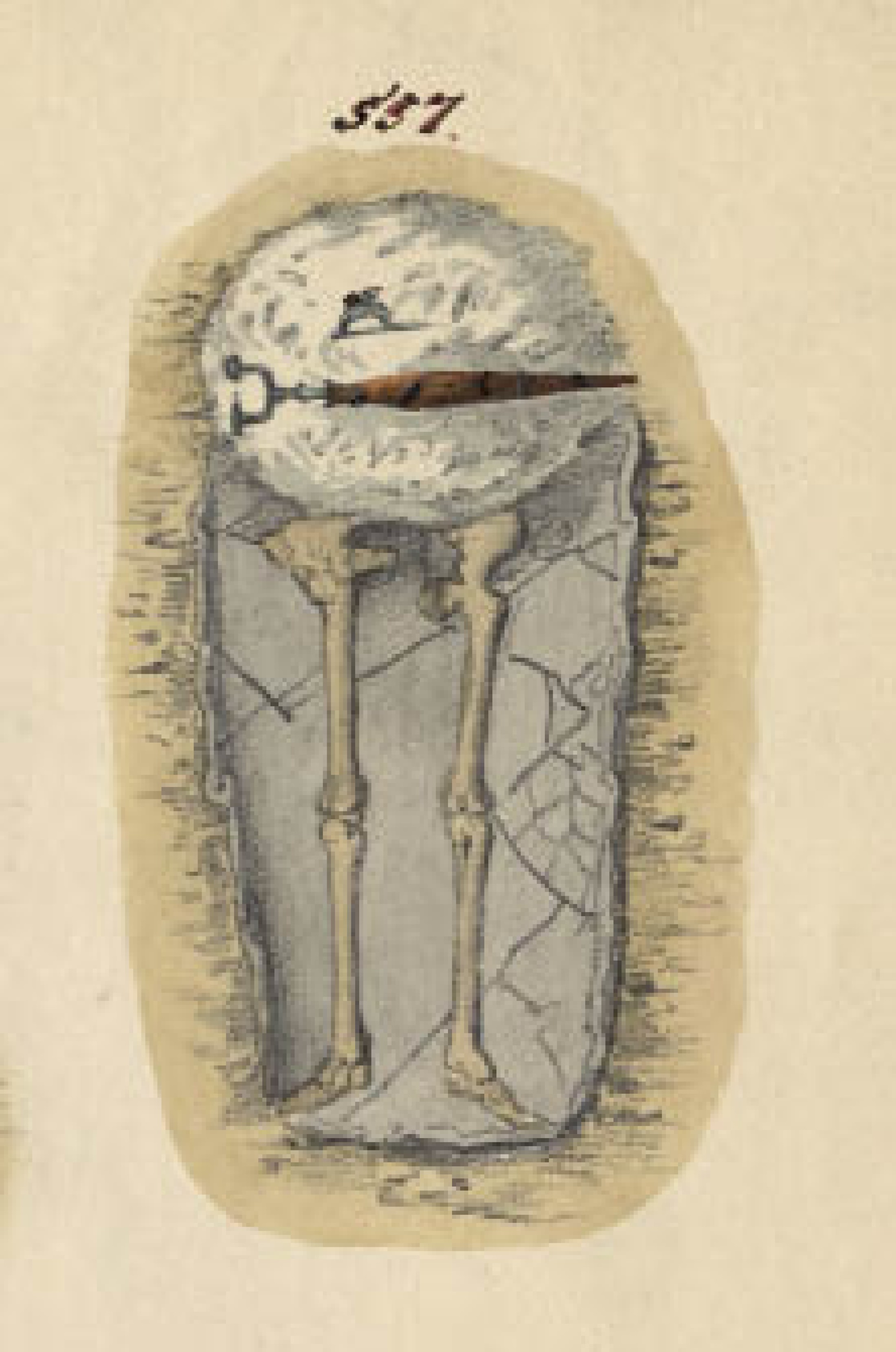Burial practices at the Hallstatt burial site
Archaeological evidence of death rituals and belief in the afterlife stretches back to the Old Stone Age. Graves are as diversified and individual as living people: no two of them are ever the same. And yet, the various burial forms reflect a common culture sharing common ideals. This picture of a possible burial ceremony in the High Valley is based on the interpretation of old and new excavation findings, completed by new results from the research into textile, dyeing, leather and costumes and into the population of Iron Age Hallstatt.Reconstruction of a burial ceremony
Partial cremation




